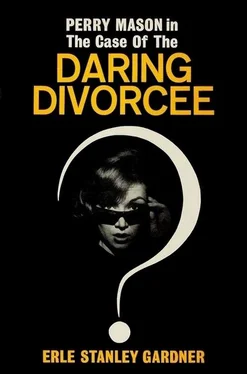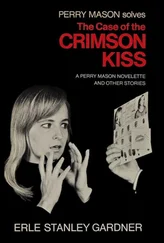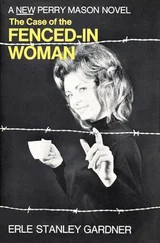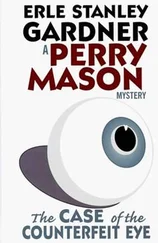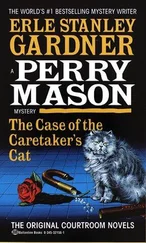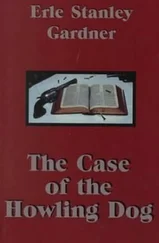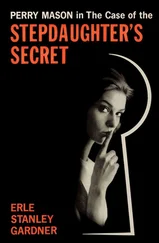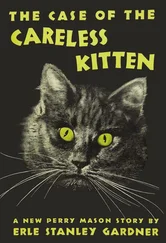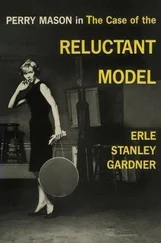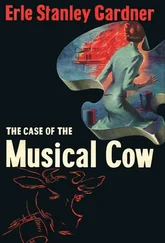“Now, I told you, did I not,” Mason asked, “that Simley Beason had taken this gun from my office and wrapped it in paper, sealed the paper, but that when the package was returned to my office the paper had been cut with a razor or sharp knife and there was no way of telling that this was the gun which had come from the defendant’s handbag?”
“Objected to as calling for hearsay evidence,” Ellis said.
Mason said, “That’s not hearsay evidence. Lieutenant Tragg has testified as to what I told him. I am now trying to test his recollection by cross-examining him on the entire conversation.”
“The objection is overruled. Answer the question,” Judge Fallon ruled.
“Yes,” Tragg said.
“So,” Mason said, “if what I told you is correct, there is no way of showing that this gun is the one that I took from the defendant’s handbag or the one that Simley Beason took from my office.”
“Objected to as being argumentative and calling for a conclusion of the witness,” Ellis said.
“Sustained,” Judge Fallon said.
Mason smiled. “Lieutenant Tragg,” he said, “you have identified this gun as the gun from which the fatal bullets were fired?”
“Yes, sir.”
“You know therefore it is the gun with which the murder was committed.”
“Yes, sir.”
“You have never seen that gun in the possession of the defendant, have you?”
“I have not. No, sir.”
“Exactly. And from what I told you in the conversation you have testified to, you can’t swear that after Simley Beason took this particular gun, wrapped it and put it in the golf bag, someone didn’t take out the package, slit the paper, unwrap the gun, wrap up another gun in the paper and put it back in the bottom of the golf bag, can you?”
“The same objection,” Ellis said.
“If the Court please,” Mason said, “this is a different question. I am asking him now if as a result of the conversation he had with me, he can connect that gun with the defendant.”
“The objection is overruled,” Judge Fallon said. “I think this question is legitimate cross-examination in regard to the conversation that the witness had with Perry Mason.”
“No, sir,” Lt. Tragg said, “ from what you told me I can’t positively swear that this gun hadn’t been unsubstituted after Simley Beason took it. I can’t positively swear that the gun that you gave me was the gun that you took from the woman’s handbag, and I can’t positively swear from your conversation that this identical gun was connected with the defendant; that is, you understand, Mr. Mason, from your conversation, from what you told me.
“I can, however, swear from a fingerprint that this gun had been handled by the defendant at a time when she had some foreign, sticky substance on the middle finger of her right hand.”
“Exactly,” Mason said. “That substance could have had sugar in it?”
“Yes, sir, sugar, nail polish, mending cement, any one of a dozen things.”
“And had dried?”
“Yes, sir.”
“And left a latent print to which dusting powder did not adhere?”
“Yes, sir.”
“And yet it was a lasting latent print?”
“Yes, sir.”
“The average latent print, containing moisture and sebaceous matter retains its moisture for only a relatively short period of time?”
“Yes, sir.”
“But this was a different type of print?”
“Yes, sir.”
“Not as perishable as the ordinary print?”
“That’s right.”
“Then, for all you know it may have been left there last Christmas when the defendant was eating Christmas candy and the gun was in the possession of her husband?”
Tragg’s face flushed. “I can’t tell when the print was made.”
“It could have been made last Christmas?”
“It could have been.”
“Exactly,” Mason said. “That is all of my questions on voir dire . I now object to the introduction of the evidence on the ground that it is incompetent, irrelevant and immaterial and no proper foundation has been laid.”
Judge Fallon said, “The proper foundation has been laid to identify this as the murder weapon and it may be received in evidence as the murder weapon.”
Ellis said, “I will now withdraw Lieutenant Tragg and call Simley Beason as a witness.”
Beason marched to the witness stand as one who faces an inescapable ordeal. He raised his right hand, took the oath and after giving his name and address to the clerk, looked with steady hostility at Morton Ellis.
“Your name is Simley Beason, you were on the fourth and fifth of this month employed as office manager at Hastings Enterprises, and had been so employed for a period of some four years prior to that date?”
“Yes, sir.”
“Your Honor,” Ellis said, “this is a hostile witness and I am going to have to use leading questions to interrogate him.”
“He hasn’t shown any evidence of hostility so far,” Judge Fallon said. “Proceed with your examination along the regular lines. If it becomes apparent that he is hostile I will so rule and permit you to ask leading questions.”
“Very well, Your Honor.”
“I call your attention to Tuesday, the fifth of the month, and ask you if you saw the defendant at that time?”
“I did, yes, sir.”
“When did you first see her?”
“Somewhat early in the morning.”
“How early?”
“I didn’t look at my watch.”
“Was it before daylight?”
“I can’t remember.”
“Where did you meet her?”
“At a restaurant.”
“How did you happen to meet her there?”
“She had told me she would be there.”
“This was an all-night restaurant?”
“Yes.”
“You met with the defendant and had breakfast there with her?”
“Yes.”
“And conversed during breakfast?”
“Naturally we didn’t simply sit there and stare at each other.”
“Just answer the questions,” Ellis said. “Did you or did you not converse with the defendant?”
“I’ve answered the question. I told you we did.”
“And following that conversation, you went to Mr. Mason’s office, that is, to the building where Mr. Mason has his offices?”
“Yes.”
“And entered that building?”
“Yes.”
“Did you sign a register in the elevator?”
“Yes.”
“Did you sign your own name?”
“No.”
“You signed an assumed name?”
“Yes.”
“And did you take the elevator to the floor on which Mr. Mason has his offices?”
“Yes.”
“And went down to Mr. Mason’s offices?”
“Yes.”
“What did you do when you arrived at Mr. Mason’s offices?”
“I went in.”
“Was there anyone there to let you in?”
“Yes.”
“Who was it?”
“A charwoman.”
“And you had some conversation with her?”
“Yes.”
“What did you tell her?”
“I can’t remember.”
“And did you take something from Mr. Mason’s office?”
“I refuse to answer.”
“On what ground?”
“On the ground that the answer may incriminate me.”
Ellis looked at Judge Fallon.
“Very well,” Judge Fallon said. “This witness is a hostile witness. You may have your ruling and use leading questions — although you have been doing so without objection from the defense. Proceed.”
“Did you take a gun from Mr. Mason’s office?”
“I refuse to answer on the ground that the answer might incriminate me.”
“Later on in Mr. Mason’s office and in the presence of Mr. Mason, did you telephone your secretary at the Hastings Enterprises?”
Читать дальше
